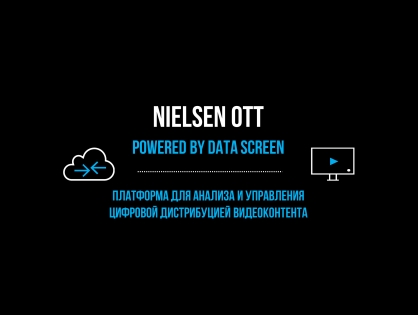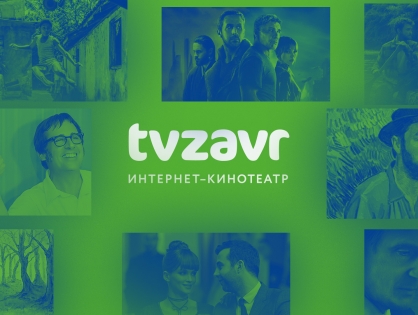 The analysis of the trends of the year from Anastasia Plotnikova, the marketing Director of online cinema Okko.
The analysis of the trends of the year from Anastasia Plotnikova, the marketing Director of online cinema Okko.
The idea to make money on selling movies online seems eccentric for many people 10 years ago. The widespread, almost legitimate piracy and the unwillingness of Russians to pay for watching in Internet did not seem to leave the cinema business choice: only AVOD (free for the viewer showing of content sponsored by the advertisers) has a chance of success.
2017 is not over yet, but it already became a turning point for online business-cinemas. According to J’son Partners Consulting, in the first half of the year it grew more than 41% compared to last year, reaching 6.77 billion rubles. It is interesting that one of the main growth drivers is paid model, which is increased by 56% (for the first 6 months) compared to the total annual indication of 2016. According to TMT Consulting, in 2016 the share of revenue from the paid model among all the system reached 49%.
A global commitment to paid content is defined, let us consider the trends of the finishing year and try to build a forecast for the near future.
The attractiveness of catalogues
Usually the film appears first in VOD (Video on Demand) only by EST model – purchase of one piece of content permanently (file is downloaded to the device or in the cloud). This model replaced the past DVD/Blu-ray – before disks were the next step of monetization of the film after the release in cinemas.
Then after some time the TVOD rights open for it (renting of the movie for 48 hours), and in the end the film gets into the subscription and advertising model. In 2017, the situation began to change: renting window for entering of new items in the subscription catalogue becomes smaller. We have already seen it and hope that it will be a positive trend. For example, film “Gogol. The Beginning” released in theaters August 31, 2017, appeared in the catalogue with the subscription in 4 weeks only.
The popularity of Russian content
Traditionally, Hollywood blockbusters are making the main sale system of cinemas, including Okko. A gradual reduction in rental windows, especially by EST model, making this content attractive, and the audience prefer the home viewing. However, in March 2017 60% of sales were made by Russian films. Of course, it is because of several strong releases that have come at the beginning of the year: “Gravity” (Prityazhenie), “Viking” and “Go Away, Vasya!” (Guliay Vasya). However, in next months, the demand for Russian films has exceeded the numbers of previous year and was stable, while in late summer of 2016 there was a decrease. According to changing of users preferences, we have increased investment in this direction: in quantitative terms, the catalogue of the Russian content of Okko increased by 15%.
The growth of variations of the devices
According to J’son Partners, SMART TV and mobile devices remain (and will remain, apparently), the main drivers of growth of content sales for all kinds of purchases on a paid model. Usability and more complex access to pirated sources are still their strong parts.
I`m sure that by y the end of 2017 we’ll see another trend, strengthened this year: TV`s with screens of ultra high definition (UltraHD) are becoming popular (the global forecast for growth of segment by 38% according to forecasts from Futuresource Consulting), and Hollywood studios produce enough relevant content. Okko now has the largest catalogue of 4k-movies in Russia and we see a constantly growing demand for them.
With Smart TV advanced users want to have an experience as close to the experience of watching a movie in cinema as possible: high quality picture, surrounded sound and the silence around. Nothing should interfere with total immersion in what is happening on the screen.
Another pattern of use is mobile devices. You can start to watch a movie in just a few seconds in any place where there is Internet or without Internet connection, if the movie was stored on the device. Two very different user experiences make the work of departments of product development in online-cinemas harder. Users’ requests for technological sophistication of VOD services become peremptory.
The segmentation of the market
Every player is searching for its place. Some are beginning to make films, others – cooperating with the TV channels, trying to offer unique content, which have no competitors. After 7-8 years of existence of the Russian VOD, we can say that the market matures gradually, and being segmented.
After 7-8 years of existence of the Russian VOD, we can say that the market matures gradually, and being segmented.
The model on which Okko decided to be developed Okko was unusual for the market: the service does not cooperate with advertisers and operates only on user fees. Our main goal is convenience of the service. We are doing everything in order to bring the experience of watching in cinemas to your house.
The attention from the State
In 2016 the law was mainly focused on the fight against piracy (closing torrent trackers, blocking their illegal resources and “mirrors”, etc.), in 2017 the state began to pay attention to the direct regulation of the industry. So, on the 19th of April in the second reading the so-called “Law about online cinemas” was passed, according to it, video services which authorized capital has more than 20% of foreign investment shall not be eligible to work in Russia. If five years ago nobody knew what online cinema is, now they became a separate industry, and recognized as promising business. There is an opinion that the industry is still too young to be regulated, and the best policy now is not to interfere. In our point of view, the law initiatives are constructive. We are ready to discuss and support them.
SOURCE: SOSTAV





Отправить ответ